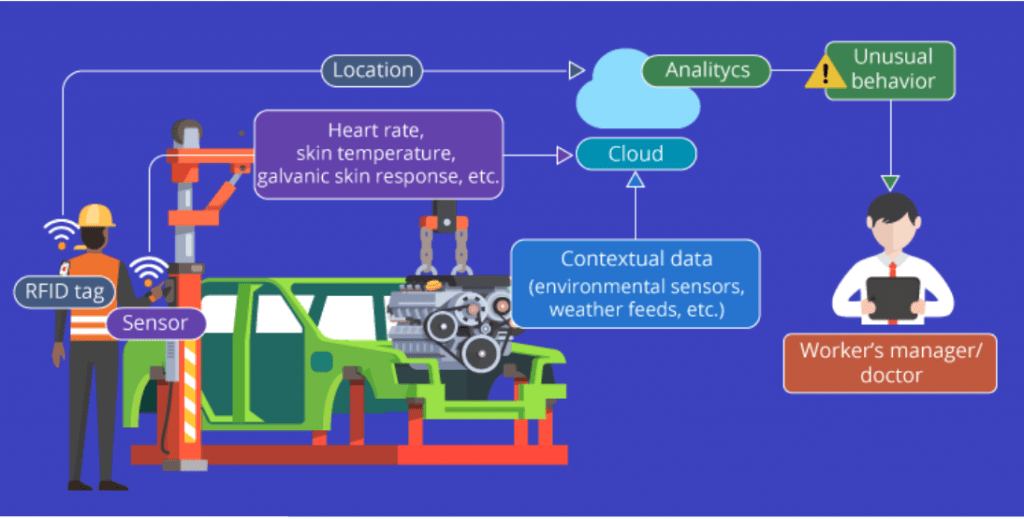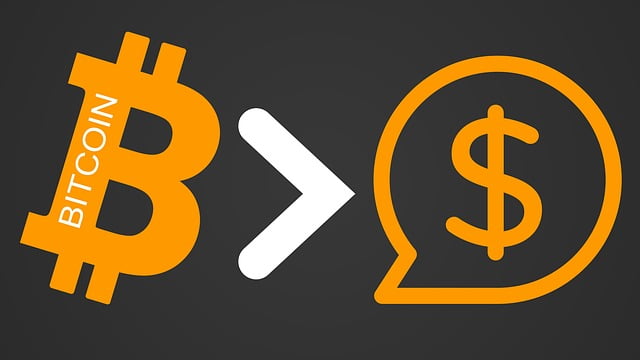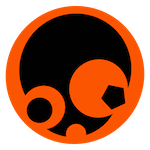7 Biggest Internet of Things (IoT) Trends in 2021
Meta description – For 2021 and beyond, the 7 biggest Internet of Things (IoT) trends you should look out for are healthcare, remote work, industrial manufacturing, smart cities, consumer electronics, smart cities and digital twins.
Cover image – UnSplash
2020 was a tumultuous year! Not much has changed as the coronavirus pandemic continues to affect people across the world even in 2021. With limited contact between humans, society today is more reliant on connected devices and tools. Be it Alexa sharing weather updates or Fitbit tracking physical activities, IoT (Internet of Things) is everywhere.
IHS Technology predicts the number of IoT devices to reach 75 billion by 2025. Needless to say, the future is IoT and here are 7 trends that will continue shaping the way IoT is used and adopted.
1) IoT and data-driven health experience
At a time when the pandemic stretched the healthcare industry to its limits, IoT accelerated tech-driven healthcare transformation. From telemedicine, interconnected medical devices such as blood pressure monitoring system, hospital’s HVAC (Heating, Ventilation and Air-Condition) to ambulance vehicle tracking and monitoring, new-age digital solutions are redefining how devices and people interact in the healthcare industry.
IoT-connected intelligent devices are enabling patients to monitor vitals, make online appointments, and track the health conditions of elderly family members.
On the other hand, hospitals and physicians can manage assets and monitor patient health remotely. Some of the prominent examples of IoT devices in healthcare include virtual wards, wearable biosensors, smart thermometers, connected inhalers, and automated insulin delivery (AID) systems. The future with healthcare-specific IoT products looks promising since they can improve treatment outcomes, manage workflows efficiently, and reduce treatment costs for patients.
Here are some of the key healthcare IoT innovation statistics:
• IoT-driven medical devices will help the healthcare industry to save $300 billion.
• 70% of best-selling wearable devices belong to health and fitness.
• Revenue from healthcare IoT products will reach $135 billion by 2025.
2) IoT-fuelled remote work
Did you know 84% of businesses adopting IoT technology were able to function properly during the pandemic? As work-from-home is the new normal for many around the world, IoT devices are playing a key role in shrinking the digital-physical divide. The proliferation of AI assistants like Siri, Alexa, and Cortana enables dispersed workforces to streamline processes and stay productive remotely.
The downside is the challenge faced by IT teams to ensure security and compliance.
Source: IoTAgenda
Let’s take a look at how different industries leverage IoT-enabled devices to stay productive:
• Restaurants use remote temperature sensors to identify malfunctioning equipment and reduce the chances of foodborne illness.
• Transportation companies utilize IoT systems to track data related to vibration, temperature and location for trucks in transit.
• Manufacturers producing essential supplies take resort to wireless temperature and vibration sensors to identify potential equipment issues and predict downtime.
3) Industrial IoT for efficient manufacturing operations
IoT in manufacturing, commonly known as industrial IoT, has been crucial for manufacturers trying to facilitate distant servicing, supervise with connected control systems, and reduce costs. Implementing IoT has helped 70% of companies to reduce spends and improve product quality.
In the manufacturing industry, IoT technology comprises sensors, cloud infrastructure, resilient connectivity technologies. Offering scalable computation infrastructure, IoT enables manufacturers to collaborate with robots for precise motion capabilities and creates a safe work environment.
Source: ScienceSoft
Some of the popular application of IoT in manufacturing are:
• Predictive Reporting – Different sensor points enable manufacturers to obtain crucial maintenance data and predict unforeseen events.
• Remote Production Control – The large-scale data sets obtained through cloud computing models allow industrial automation systems to control machines and production processes.
• Asset Tracking – IoT-enabled asset tracking helps producers to improve utilization by calculating the use of movable equipment elements.
• Logistics Management – IoT technology also enables manufacturers to manage the automotive fleet and identify blind spots in the logistic process.
• Digital Twins – Using the IoT-driven tools, manufacturers can easily create digital copies of physical objects which help businesses in experimentation and foreseeing functionality.
4) IoT-based smart cities
Do you think smart cities are just a dream of the future? Well, not really.
Dubai, a city in the United Arab Emirates, is one such example. With 90 government services digitized so far, the city is on a mission to save $245 million by eliminating paper transactions. Moreover, their AI-driven monitoring system is saving bus drivers from causing accidents because of fatigue. So, what is a smart city and how does IoT play a role in it?
Source: Lvivity
Smart cities are reliant on a framework that uses ICT technologies to govern the city infrastructure, improve quality of life, and address urbanization challenges. IoT sensors like RFID, GPS, IR, and laser scanners allow information exchange through specific protocols. These ultimately help a smart city in intelligent recognition, monitoring, and management.
IoT technology can help city authorities to understand the usage pattern of citizens and plan safety measures as well as emergency response strategies accordingly.
Here are a few things you can expect a smart city can do with IoT:
• Directing drivers to nearest available parking spots after information exchange and communication with parking meters and charging docks.
• Deploying smart garbage cans with the ability to alert waste management companies and schedule pick-ups.
• Allowing citizens to use their smartphones as driver’s license and digital IDs.
5) IoT and consumer electronics
Today’s consumers are in for nothing but convenience. Be it using smart devices for fitness or monitoring home for remote locations, there is a special place for devices that make it easier to accomplish difficult goals. IoT-augmented consumer electronic devices cater to this need.
These devices provide producers and manufacturers with a pool of data for analyzing the usage pattern to create more efficient products. The IoT-based consumer electronics industry is likely to observe exponential growth through 2021, especially in wearable health devices.
For example, AbiBird by ATF Services is using AWS IoT core and in-home infrared sensors to monitor elderly family members staying at home. The alerts are sent through a smartphone app which will also let you know once a routine behaviour is not met.
6) Digital twins and IoT
Understanding digital twins and the role of IoT in it becomes easier when you have an example handy. Let’s say you want to predict the amount of energy a wind turbine farm is likely to produce, given the future environmental conditions, historical data related to outages and performance. This is where digital twins come in.
Source: Siemens
The term ‘digital twins’ didn’t get much momentum until 2002 when John Vickers of NASA used it. NASA applied the concept first in the 1970s during its Apollo 13 program.
Digital Twins refers to the virtual representation of an object during its entire lifecycle. They help engineers to predict what can happen to the original product under circumstances.
For example, engineers can test digital twins for visualizing products for real-time use, refining assumptions, troubleshooting, and eliminating complexities. All these can be done only because of IoT-enabled sensors that collect data throughout the lifecycle of the product.
Apart from manufacturing, digital twins are used in:
• Automotive – Digital twins are used in the automotive industry to identify issues with telemetry sensors and monitor the performance of autonomous vehicles.
• Healthcare – In healthcare digital twins enable doctors to predict the well-being of a patient with the help of sensors.
7) Blockchain and IoT
One of the biggest IoT trends is the increasing adoption of blockchain technology. It is a game-changer as blockchain allows organizations to address security and scalability challenges related to IoT.
Besides facilitating interaction between multiple network nodes, blockchain uses immutable chains to record successful transactions. This allows companies to address the threats connected with potential Distributed Denial of Service (DDoS) attacks. For example, Clinitraq, a healthcare company known for producing real-time radiation dosimetry, leverages the NetObjex IoT-blockchain platform to track and administer devices.
2021 will be crucial for businesses. More industries will realize the true power of IoT and discover newer areas of application. While the healthcare and consumer electronics industry will flourish, other industries must keep up for transforming service delivery. Security concerns of businesses will continue to shape tools and discussions as IoT-devices industry is likely to generate data worth 79.4 billion terabytes by 2025.
Let’s stay connected **
My website: WPGOSOCIAL.com is a web development and marketing company. We specialize in helping Small Businesses develop credibility and brand awareness.
Quora: Question and answer with Romeo Clennon founder of WPGOSOCIAL.com; about web design, web hosting, marketing, SEO and more.
Pinterest: For marketing infographics, funny videos and more.
Stop by just to say hi, or come check out the great content on our other platforms.




